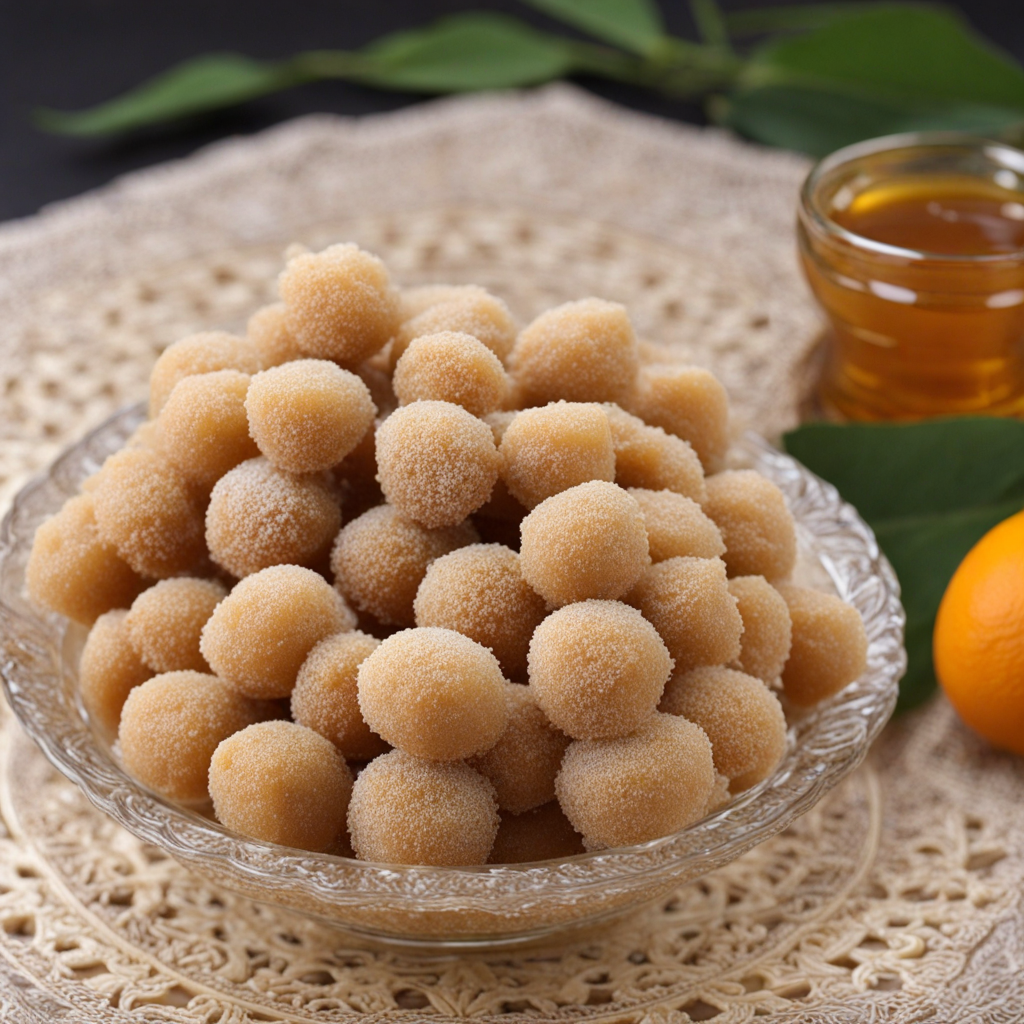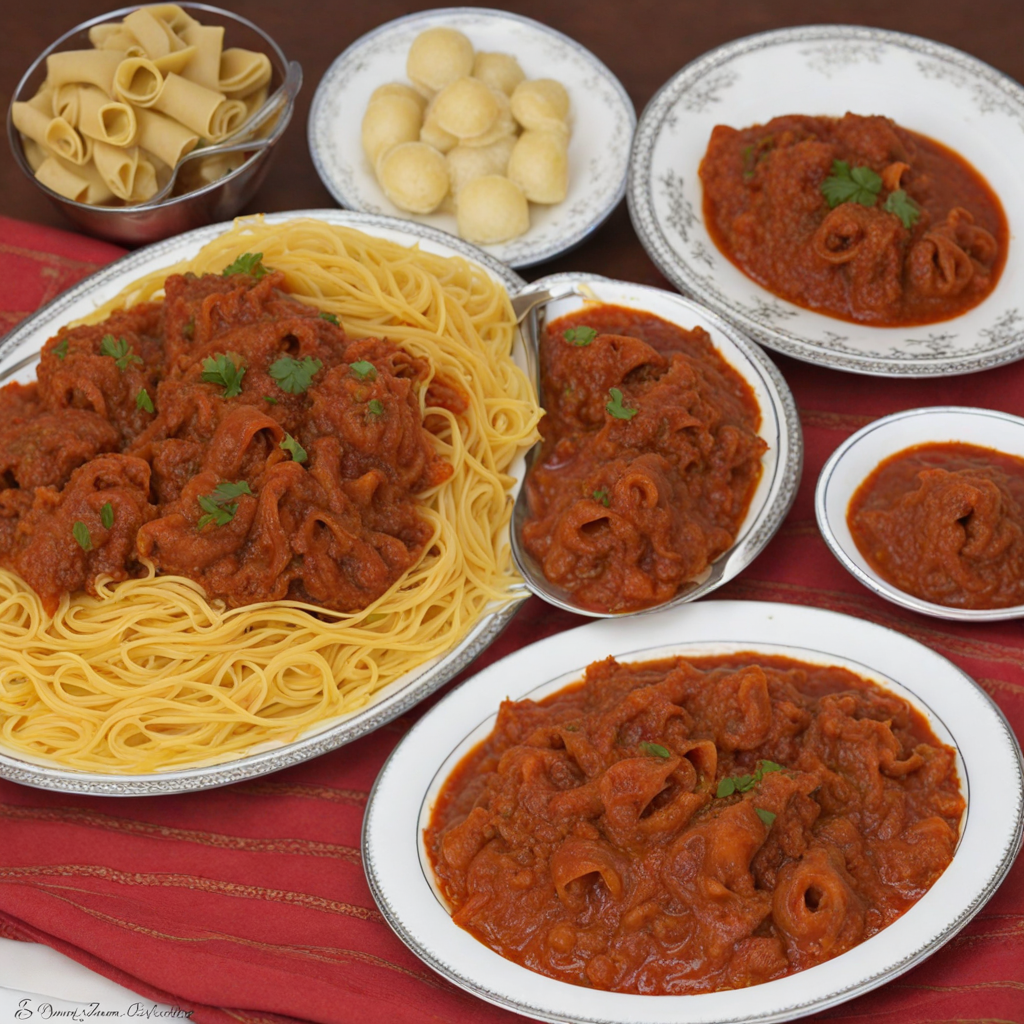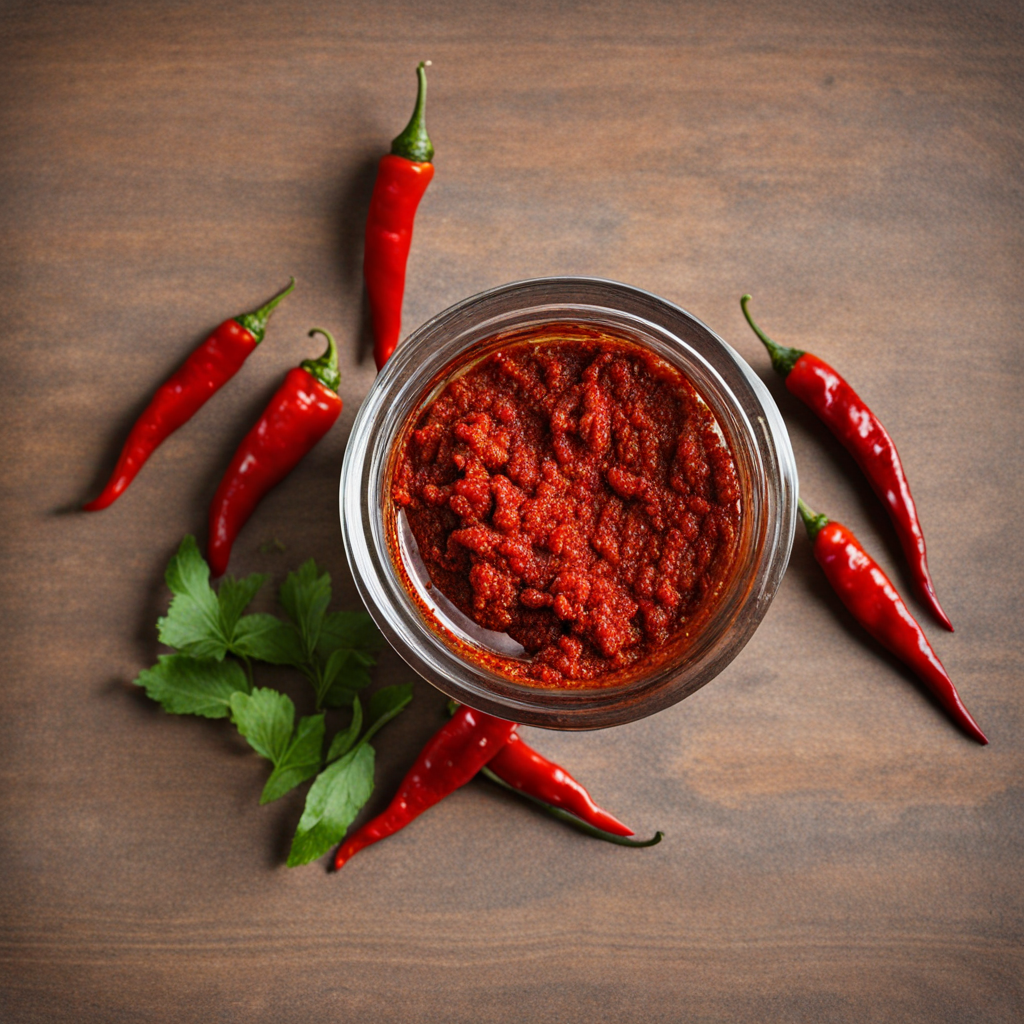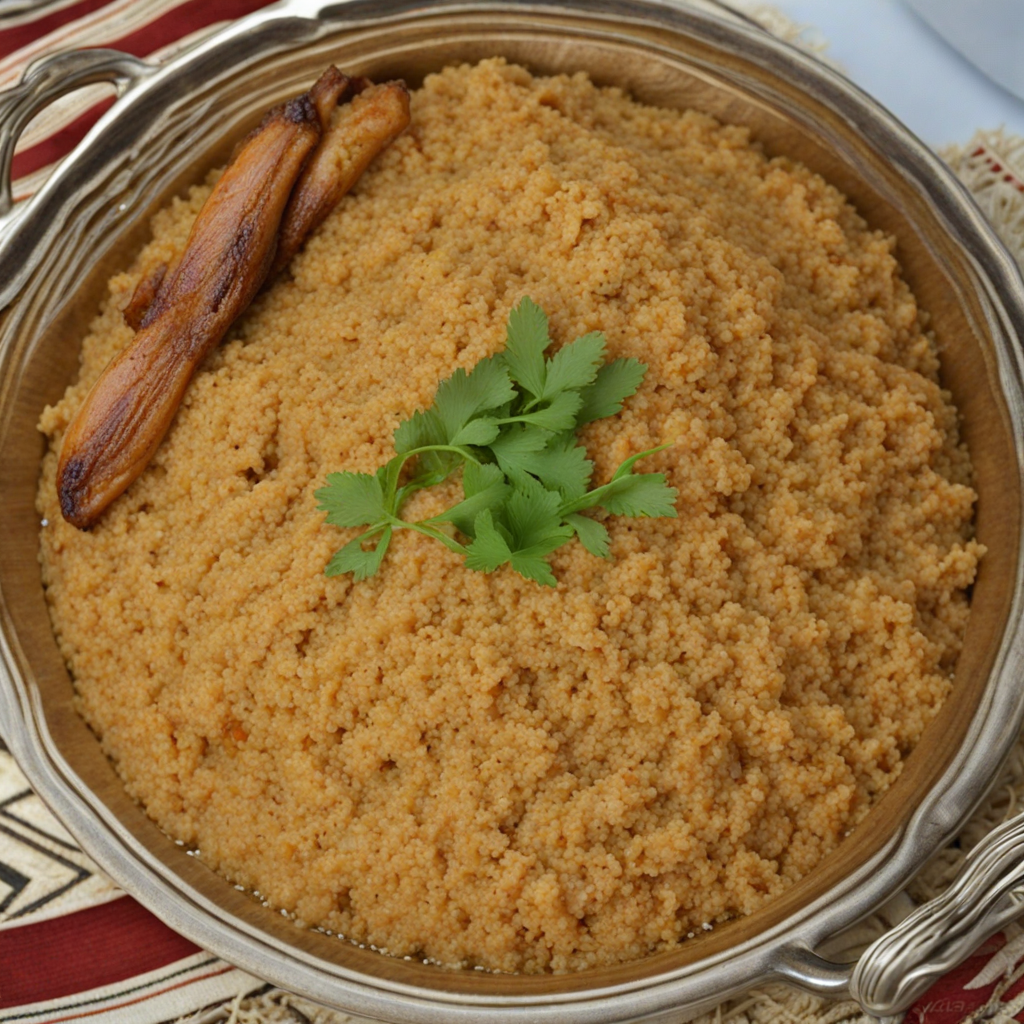Magrood
مقروض, known as "Maqroud" in English, is a traditional Libyan dessert that holds a special place in the culinary landscape of North Africa. This sweet treat is characterized by its rich, nutty flavor and delightful texture, often enjoyed during festive occasions and family gatherings. The history of مقروض is deeply rooted in Libyan culture, where it is believed to have originated in the desert regions. The name itself derives from the Arabic word "قرض," meaning "to cut," which speaks to the dessert's distinctive shape and preparation method. The flavor profile of مقروض is a harmonious blend of sweetness and nuttiness, with a slight hint of spices. The primary ingredient, semolina, contributes a hearty and slightly grainy texture, while the filling, typically made from dates or almonds, adds a natural sweetness and richness. The dessert is often flavored with a touch of cinnamon or orange blossom water, which elevates its aromatic qualities. When fried or baked, مقروض develops a golden crust that contrasts beautifully with the soft and moist interior, offering a delightful sensory experience. Preparation of مقروض is a labor of love and requires careful attention to detail. The process begins with the creation of a dough from semolina, flour, and water, which is then kneaded until it reaches a smooth consistency. The dough is rolled out and filled with a mixture of dates that have been pitted and mashed, sometimes combined with crushed nuts for added texture. After the filling is placed in the
How It Became This Dish
Origin of مقروض مقروض, a beloved Libyan delicacy, has its roots deeply embedded in the rich tapestry of North African culinary traditions. This sweet treat, primarily composed of semolina or flour, dates back to ancient times, reflecting the local agricultural practices and the influences of various cultures that have traversed the region. The name "مقروض" translates to "compressed" in Arabic, which aptly describes the method of preparation. The dish is made by shaping a dough filled with dates or nuts and then frying or baking it, creating a unique texture that is both crunchy on the outside and soft on the inside. The origin of مقروض can be traced to the Berber tribes of Libya, who utilized local ingredients to create sustenance that could endure the harsh desert climate. Dates, an abundant resource in the region, played a significant role in the diet of these communities, providing essential nutrients and energy. Over time, as trade routes expanded, the influence of Arab, Mediterranean, and even sub-Saharan culinary practices began to merge, enriching the flavors and preparation methods of مقروض. \n\n Cultural Significance In Libyan culture, مقروض is more than just a dessert; it symbolizes hospitality and community. Traditionally served during celebrations, weddings, and religious festivities, this sweet treat embodies the spirit of sharing and togetherness. The preparation of مقروض is often a communal activity, where families come together to make large batches, reinforcing bonds and creating memories. Moreover, مقروض is frequently offered to guests as a gesture of goodwill. Its presence at social gatherings signifies the host's generosity and respect towards those they invite. In recent years, the popularity of مقروض has transcended its regional origins, finding its way into Libyan diaspora communities around the world, where it serves as a link to their heritage and traditions. \n\n Development Over Time As Libya has experienced various historical shifts, so too has the preparation and consumption of مقروض. During the Ottoman Empire's reign, the culinary landscape of Libya was heavily influenced by Turkish and Arabic cooking styles. This period introduced new spices and ingredients, which found their way into the traditional recipes of مقروض. The incorporation of cinnamon, nutmeg, and other aromatic spices enhanced the flavor profile, making it more appealing to a wider audience. The Italian colonization of Libya in the early 20th century also left its mark on مقروض. Italian desserts often featured similar elements, but with a different approach to sweetness and texture. As a result, Libyan cooks began experimenting with additional ingredients, such as chocolate or different types of nuts, further diversifying the range of مقروض available today. These adaptations have allowed the dish to evolve while still maintaining its core essence. \n\n Modern Variations In contemporary Libya, مقروض has taken on various forms, reflecting the country's diverse culinary influences. While traditional recipes remain popular, modern interpretations often include innovative fillings and toppings. For instance, some variations now feature pistachios, almonds, or even modern additions like coconut or chocolate. These adaptations cater to evolving tastes and preferences, particularly among younger generations. Street vendors and local bakeries have also embraced مقروض, making it more accessible to the general public. As urbanization increases, the demand for convenient and portable snacks has led to the proliferation of مقروض in various forms, from small bite-sized pieces to larger, more elaborate versions. This has helped to maintain the dish's relevance in a fast-paced world while still honoring its historical roots. \n\n Global Influence and Popularity The diaspora of Libyans around the world has played a significant role in promoting مقروض outside of Libya. As Libyan communities establish themselves in countries such as the United States, Canada, and European nations, they bring their culinary traditions with them. مقروض has become a symbol of cultural identity for many Libyans living abroad, often featured at community events, cultural festivals, and family gatherings. Social media has further amplified the visibility of مقروض, with food bloggers and influencers sharing recipes and showcasing this delightful treat. This online presence has piqued the interest of non-Libyans, leading to a growing appreciation for مقروض beyond its traditional audience. As more people discover this delicious dessert, the potential for cross-cultural culinary exchange increases, allowing for an even richer gastronomic landscape. \n\n Preservation of Tradition Despite the modernization and globalization of food culture, efforts to preserve traditional preparation methods for مقروض continue. Many families pass down recipes from generation to generation, ensuring that the essence of this dish remains intact. Culinary workshops and classes have emerged, focusing on teaching the art of making مقروض, emphasizing the importance of technique and the use of high-quality, local ingredients. Additionally, there is a growing movement among Libyan chefs and food enthusiasts to promote traditional Libyan cuisine as a whole, with مقروض often highlighted as a standout dish. This revival not only honors the past but also empowers new generations to take pride in their culinary heritage. By maintaining these traditions, Libyans are able to celebrate their identity while also inviting others to partake in their rich culinary culture. \n\n Conclusion In summary, مقروض represents a significant aspect of Libyan culinary heritage, rooted in history and enriched by cultural exchanges over the centuries. Its evolution from a traditional sweet treat to a modern delicacy reflects the adaptability of Libyan cuisine in the face of change. Whether enjoyed at a festive gathering or as a simple snack, مقروض continues to connect people to their history, culture, and to one another, ensuring its place in the hearts and palates of those who cherish it.
You may like
Discover local flavors from Libya







